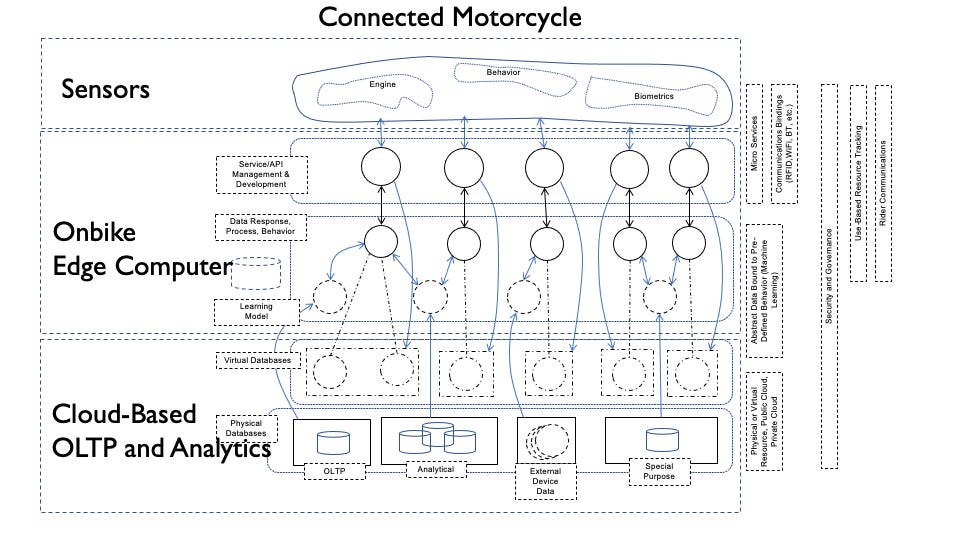Where Is Edge Computing?
From “An Insider’s Guide to Cloud Computing”
It’s not going out on a limb to say that edge computing will continue to rise, with many of the systems and services that are now a part of public clouds moving to the edge. However, edge computing must be at the edge of something. That “something” will be public cloud providers. After all, the two are related.
If you look at today’s most popular edge computing technology providers, they include all the big public cloud providers. So, edge computing will become just another architectural option that you can leverage if it makes good business and technical sense for your application and/or system. Therefore, it should continue to be on your radar for future evolutions of cloud, and of technology in general.
Figure 10-16 is an example of a modern edge computing system; in this case, it provides a set of services for a motorcycle. Note how the core subsystems are divided into systems that are on the device—in this case, on the bike—and systems that exist on the back-end system on a public cloud provider. The reason for edge computing here is obvious. The system needs to make immediate deci- sions on the bike, such as turning off the fuel pump if the bike is tipped over. Other systems are more effective off the bike and on the public cloud provider, such as gathering mechanical metrics over time to determine if you have an impeding breakdown event that’s preventable if caught before it happens, such as a part that’s known to break at a certain wear level. The potential system value and ROI are huge if we keep this architectural option in our back pocket.
Figure 10-16. This example of edge computing depicts a connected vehicle (motorcycle), which hosts an edge device. That device has three different architectural layers. The sensors are physically attached to the bike to gather data. The on-bike edge computer contains the edge computing system that locally gathers and stores data with some processing (even lightweight analytics), and AI (knowledge at the edge). The cloud-based back-end system does some of the heavier processing and provides deeper capabilities around the use of AI and data analytics.




